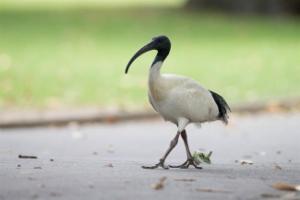Search for Threskiornis moluccus returned 10 results.
Refine results
Refine results
-
species: Threskiornis moluccus – Australian White Ibis
Australian White Ibis, Gurndirndi, Galamurn, Gu-Jiwulunbulun, Black-Necked Ibis, Sickle-Bill, White Ibis, Sickle-Bird
Kingdom: ANIMALIA
-
subspecies: Threskiornis moluccus moluccus – Australian White Ibis (Nominate Subspecies)
Kingdom: ANIMALIA
-
genus: Threskiornis
Garraalag, Gu-Jurlubu, Djulubu, Aibis, Gurndindin, Gurlmarna, Garrularna, A-Girijigiriji, Juluwu, Jurlubu, Girnalk, Galamurn
Kingdom: ANIMALIA
-
species: Plegadiphilus threskiornis
Kingdom: ANIMALIA
-
species: Threskiornis spinicollis – Straw-Necked Ibis
Straw-Necked Ibis, Juluwu, Garrarla, Gurndirndi, Girnalk, Letter Bird, Farmer's Friend, Dryweather Bird
Kingdom: ANIMALIA
-
unranked: Poltys moluccum (accepted name: Poltys illepidus)
- Record a sighting
- Synonym
-
unranked: Poltys moluccum (accepted name: Poltys illepidus)
- Record a sighting
- Synonym
-
unranked: Pleuromma moluccum (accepted name: Poltys illepidus)
- Record a sighting
- Synonym
-
Biodiversity Science project: Australian white ibis community survey
The Australian white ibis, Threskionis molucca, is a highly visible native water bird in New South Wales. Prior to the 1970s, the white ibis was rarely sighted in urban areas and did not breed in the Sydney region but followed the non-permanent waters of inland lakes and rivers. Due to extensive droughts and changes in water regimes they have sought refuge in coastal wetlands...

-
Site Page: National Science Week: School Biodiversity Image Competition – Atlas of Living Australia
Posted on 9th May 2018 Win prizes for taking wildlife images in your school yard and uploading them to the ALA! To celebrate National Science Week (11-19 August 2018), we will be running our Atlas of Living Australia (ALA) School Biodiversity Image Competition again. What you need to do: Take images of plants, animals or fungi in your schoolyard This picture of an Australian White Ibis (Threskiornis molucca) isn’t particularly clear...
- «
- »


